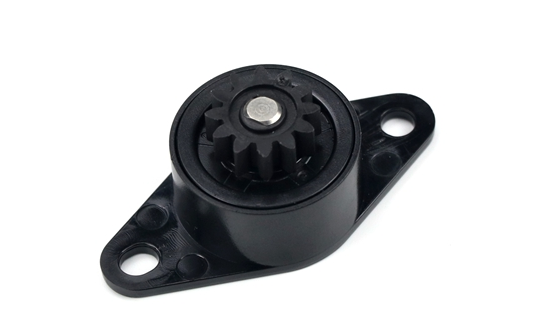How Do Gear Dampers Work?
Gears play a crucial role in various mechanical systems, from automobiles to industrial machinery. However, the smooth operation and longevity of gears can be compromised by vibrations and shocks generated during their operation. Gear dampers serve as essential components in mitigating these effects, ensuring smoother performance and extended lifespan. In this article, we delve into the workings of gear dampers, shedding light on their mechanisms and benefits.
Understanding Gear Dampers
, also known as gear shock absorbers or torsional vibration dampers, are devices designed to reduce vibrations and shocks transmitted through gear systems. These dampers are particularly vital in applications where precise movement, noise reduction, and equipment longevity are paramount.
Principle of Operation
Gear dampers operate on the principle of dissipating kinetic energy generated by vibrations and shocks within a gear system. They typically consist of two main components: a damping medium and a housing. The damping medium, often a viscous fluid or elastomeric material, absorbs the energy generated by vibrations as the gears rotate. This absorbed energy is then dissipated in the form of heat, effectively dampening the vibrations.
How Rotary Dampers Provide Damping Effects?
While is used, we wonder how rotary damper works?
1. Gear dampers
Due to the invisible braking effect of the viscous grease on the rotating body, the viscous grease in the body produces a damping force on the movement of the moving parts. The size of the torque is determined by the viscosity of the viscous grease and the oil contact surface.
2. Shaft dampers
The resistance of the damping oil multiplied by the area of the blade produces a torque. The torque generates when the shaft rotates. It is determined by the viscosity of the grease, the pressure area of the blade and the gap between the body and the blade.

Types of Gear Dampers
There are several types of gear dampers, each suited to specific applications and operating conditions:
Viscous Dampers: These dampers utilize a viscous fluid to absorb and dissipate energy. The fluid flows through chambers or passages within the damper, creating resistance to the motion of the gears and reducing vibrations.
Elastomeric Dampers: Elastomeric dampers incorporate rubber or elastomer components to dampen vibrations. These materials deform under load, absorbing energy and reducing the transmission of shocks through the gear system.
Tuned Mass Dampers: Tuned mass dampers consist of a mass attached to a spring and damper system. By adjusting the mass and stiffness of the system, these dampers can be tuned to specific frequencies, effectively targeting and reducing vibrations within a gear system.
Benefits of Gear Dampers
The integration of gear dampers offers several benefits to mechanical systems:
Vibration Reduction: Gear dampers effectively reduce vibrations transmitted through gear systems, resulting in smoother operation and reduced wear on components.
Noise Reduction: By dampening vibrations, gear dampers help minimize noise generated by , contributing to quieter operation in various applications.
Enhanced Performance: Reduced vibrations and noise lead to improved performance and efficiency in mechanical systems, allowing for more precise operation and better overall functionality.
Extended Lifespan: Gear dampers help protect gear components from excessive wear and fatigue, extending the lifespan of equipment and reducing maintenance requirements.
Conclusion
Gear dampers play a crucial role in enhancing the performance and durability of mechanical systems by reducing vibrations and shocks within gear assemblies. By employing various damping mechanisms such as viscous fluids, elastomeric materials, and tuned mass systems, these dampers effectively mitigate the adverse effects of vibrations, ensuring smoother operation, reduced noise, and prolonged equipment lifespan. Incorporating gear dampers into gear systems is essential for optimizing performance and maintaining reliability across a range of applications.
For inquiries about gear dampers or to find a reliable supplier, please don't hesitate to contact us.

Comments
Post a Comment